From Drumbeats to Downloads: How African Storytelling Evolved Through Music and Media
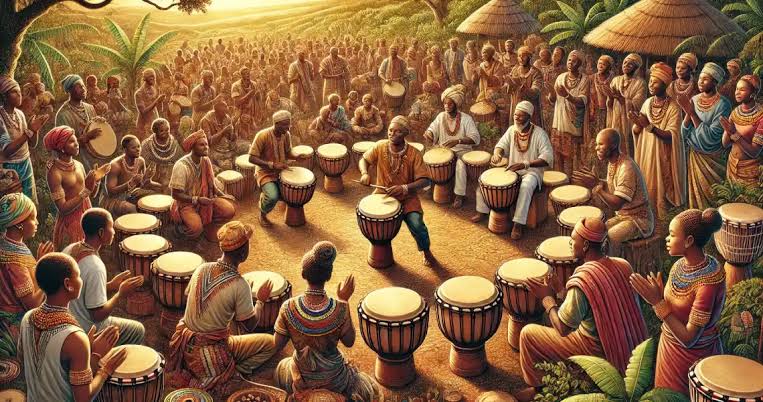
INTRODUCTION: The Story Beneath the Sound
Long before microphones and mixing boards, stories lived in the mouths of elders and the beats of hand-carved drums. Picture this: A village elder sits under a moonlit baobab tree, surrounded by eager children, weaving tales of clever animals, ancient heroes, and the spirits of the land. His voice rises and falls like a melody, punctuated by drum rhythms and communal chants.
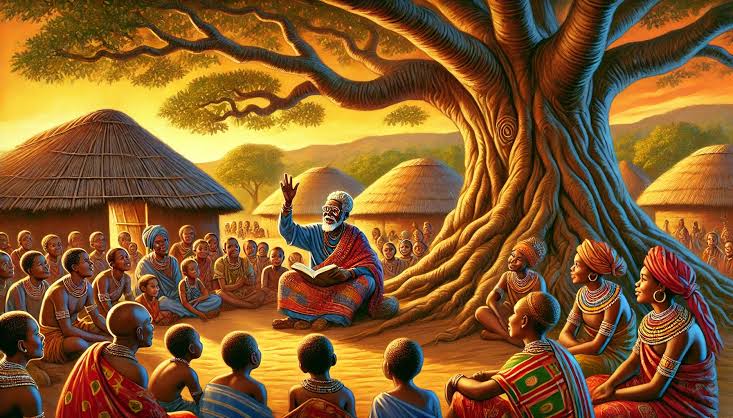
Photo Credit: Afriklens
Fast forward to a packed club, movie premieres and comedy shows across Africa The bass thumps. Phones light up. Lyrics fly like chants. Dance steps echo rhythms once performed around fire pits. In Johannesburg, we see vibe to the pulse of Amapiano, smooth, jazzy, rhythmic, distinctly South African.
At its core, African storytelling has never been just about passing time. It has always been about preserving culture, teaching identity, and strengthening communities. From griots in Mali to TikTok creators in Nairobi, from drumming in shrines to beats on Spotify, the message is the same: we are our stories.
Rooted In Rhythm: Oral Tradition & Storytelling
Long before the printing press or podcast mic, Africa preserved its history through rhythm, memory, and performance. In many traditional societies, storytelling wasn’t just a pastime, it was the pulse of everyday life. It was how knowledge was passed down, how values were taught, and how identity was preserved across generations.
In West Africa, griots (also known as jeli or djeli) were the living libraries of their people. These hereditary storytellers and musicians carried the genealogies of families, the histories of kingdoms, and the wisdom of centuries. They didn’t just tell stories, they sang them, chanted them, dramatized them.
In Southern Africa, imbongis, poet-laureates in isiXhosa tradition, stood by the sides of kings, composing praise poetry and songs that celebrated, challenged, and questioned power.
Across the continent, storytelling was woven into the fabric of life through chants, songs, proverbs, and riddles. These weren’t just linguistic decorations; they were tools for critical thinking, emotional development, and communal memory. A proverb like “Until the lion tells its story, the hunter will always be the hero” wasn’t just poetic—it was a lesson in perspective, justice, and truth.
And of course, there were the drums, the heartbeat of communication. Talking drums could relay complex messages from village to village, mimicking speech tones and phrases. Rituals, celebrations, and warnings were encoded in their patterns.
Music As A Time Capsule
If history is written by the victors, then African music ensures that everyone’s story is remembered, especially those often silenced in textbooks. Across generations and across the continent, songs have served as living records, carrying the memory of war, resistance, love, and liberation.
In Ghana and the emergence of Highlife music in the early 20th century blended Western instruments with indigenous melodies. Highlife wasn’t just for dancing; it was a musical diary of African independence movements.
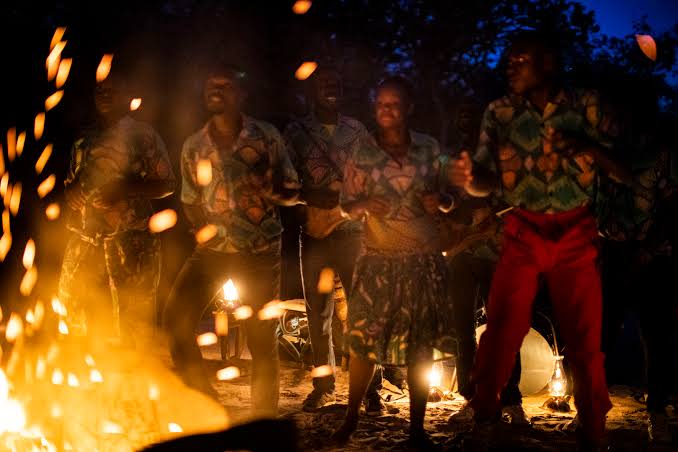
Photo Credit: Wilderness
In South Africa, music became a weapon against apartheid. Songs like “Soweto Blues” (written by Hugh Masekela and performed by Miriam Makeba) mourned the 1976 student massacre, while anthems like “Bring Him Back Home” called for Nelson Mandela’s release.
In Tanzania, Taarab music—a genre influenced by Swahili poetry was used to express social critique and commentary on gender, power, and class.
In Kenya, Benga music rose to prominence in the 1960s and 70s as a fast-paced, guitar-driven sound born from the Luo people. Benga became a grassroots megaphone, echoing both joy and resistance across communities.
In all these regions, music carried news before newspapers. It preserved memory before documentaries, music has served as a time capsule, archiving emotions, events, and ideologies in rhythms and rhymes.
Nollywood: Scripting Tradition For Screen
As the oral tradition evolved, the screen became the new stage. In modern Africa, storytelling didn’t disappear; it simply found new costumes, new scripts, and new cameras. This transformation is visible across Africa’s cinematic industry.
African cinema has long served as a bridge between ancestral wisdom and contemporary realities. African storytelling on screen has extended beyond West Africa. In East Africa, mythologies and cultural motifs are also emerging through film. One striking example is “The Legend of Ngai”—a Maasai-inspired short animation that reimagines the origin stories of the Maasai god Ngai.
In contrast, Hollywood collaborations like “The Woman King” (2022) spotlight the real-life stories of the Agojie—a fierce all-female warrior regiment from the Kingdom of Dahomey (modern-day Benin), showing a hunger for African-centered storytelling with strong cultural grounding.
These films often reflect societal values, the importance of community, and the clash between tradition and modernity. Many use local dialects, proverbs, and even oriki (praise poetry) to enrich the narrative. In doing so, they don't just entertain; these movies also educate, preserve, and interrogate.
Afrobeats, Amapiano & The New Griots
In ancient Africa, griots were the keepers of memory, oral historians who used melody, rhythm, and performance to narrate the stories of kings, clans, and communities. Today, the microphone has replaced the talking drum, the stage has gone global, and the new griots wear headphones instead of robes.
Contemporary African musicians are now the continent’s most influential storytellers. Through Afrobeats, Amapiano, and other genres, they shape cultural memory, reclaim history, and reflect the realities of a generation navigating love, struggle, and survival in real time.
In Kenya, the award-winning group Sauti Sol embodies what some call “social realism in harmony,” while in South Africa, Amapiano has redefined what storytelling sounds like. Though largely instrumental, this genre conveys identity through vibe, rhythm, and fashion.
What unites these different genres of music and artists is their role as chroniclers of the African experience. Whether it’s a party anthem or a protest song.
In this evolution, the message remains clear: Africa has always told its own story. Now, it’s just louder, faster, and impossible to ignore.
From Palm Wine To Podcasts: Media’s New Mouthpiece
Long before microphones and mobile phones, stories flowed over calabashes of palm wine. In village courtyards and moonlit gatherings, tales were told with rhythm, laughter, and wisdom. Fast forward to today, and while the setting has changed, the spirit remains. Only now, instead of sitting under a baobab tree, we press play on a podcast or scroll through TikTok.
Digital creators have become the modern mouthpieces of African wisdom, humor, and critique. Much like the griots and elders of old, they use entertainment not just to amuse but to enlighten. Whether it’s a three-minute skit, a comedic rant, or an hour-long conversation on Spotify, African content creators are blending folklore with fresh formats.
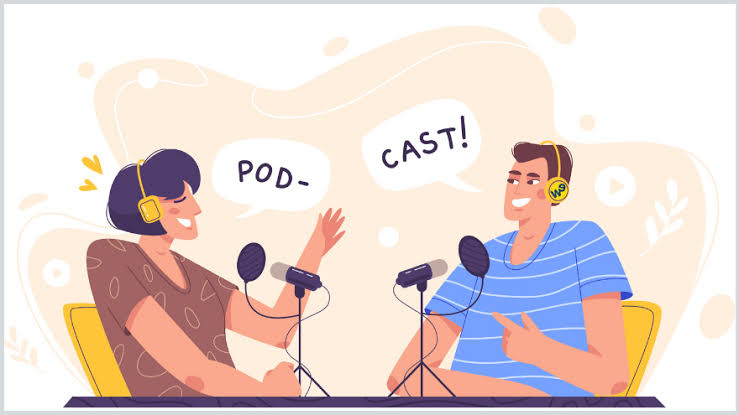
Photo Credit: Webescuela
Take the rise of podcasters like I Said What I Said (Nigeria) and The Mics Are Open (Kenya), These platforms do more than offer hot takes, they engage with topics like mental health, gender roles, identity, and tradition, often using local slang, proverbs, and anecdotes that reflect cultural nuances. They are, in essence, the new-age palavers
In all of this, platforms like Spotify, Instagram, YouTube Shorts, and X Spaces (formerly Twitter Spaces) have become the new village squares. They’re not just places for trends, they’re forums for memory, cultural exchange, and sometimes even activism. With more Africans online than ever before, our stories have never traveled so far, so fast.
The Continuity Of Culture
For all the shifts in format from calabashes to cameras, from firelight to fiber optics one truth remains constant: Africans have always found creative ways to preserve, pass on, and perform their stories.
It’s easy to assume that today’s music videos, memes, or social media rants are disconnected from ancestral traditions but that would be a misreading of history. What we see today is not a cultural departure. It’s a remix.
Yes, the mediums may have modernized, but the mission to educate, entertain, question, and connect remains intact. Every viral video that riffs on an old proverb, every Amapiano set that brings youth together, and every drama series rooted in traditional values proves that culture adapts it doesn't vanish.
In fact, the very success of African entertainment today proves that when culture is allowed to evolve, it thrives. Rather than lose our identity to globalization, African creators are showing the world how authenticity can travel through algorithms.
“Our ancestors used drums; we use downloads. But both are ways to tell our truth.”
CONCLUSION: Storytelling Never Died
From whispered tales under moonlit skies to podcasts streamed across continents, African storytelling is alive, adaptive, and unstoppable. The tools may have shifted—from carved drums to smartphone screens—but the spirit of the storyteller remains unchanged.
Our stories were never meant to be static. They moved with the times, danced with the rhythms of each generation, and spoke the language of now while carrying the wisdom of then.
So, no, our traditions haven’t disappeared. They’ve simply been reloaded into new formats. And those who once gathered under trees now gather around screens, still listening, still laughing, still learning.
“From griots to Grammy winners, Africa has always known how to speak, sing, and move its soul into history.”
Because storytelling never died. They just went digital.
Recommended Articles
African Visionary: Jennifer Mairo's Bold Stand for Gender-Equitable Stories

Jennifer Mairo, CEO of Joy, Inc., is a pivotal force in Africa's creative ecosystem, empowering storytellers and challen...
Filmone Entertainment Secures Exclusive Rights to Niyi Akinmolayan’s Christmas Special, 'Colours Of Fire'
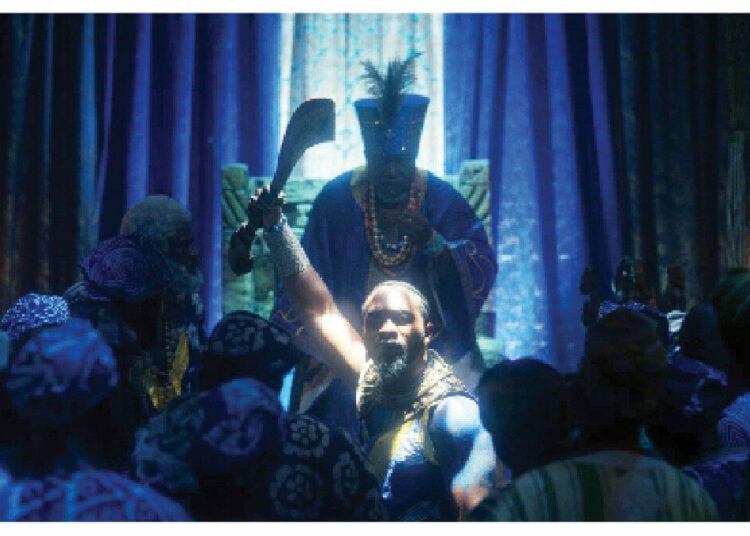
FilmOne Entertainment has secured exclusive distribution rights for Niyi Akinmolayan's new holiday feature, "Colours of ...
Success Abroad, Silence at Home: The Diaspora Guilt Complex

African migrants navigate lives stretched between continents, balancing opportunity abroad with deep ties to home. Succe...
How One Scottish Woman Ended a Deadly Tradition in Calabar

When the people of Calabar saw twins as a curse, one woman saw them as a miracle, Her story still echoes through Calabar...
Fake It Till You Burn Out: The Price of Performing Success on Social Media

In Africa’s digital age, success is performed, not earned. “Fake it till you make it” has become the new hustle but behi...
Solo Living: Why More Young People are Choosing Independence Over Marriage

Meta Description (155–160 characters) Young Africans are redefining love and family. Rising divorces, broken homes, and...
You may also like...
Arsenal Legend Thierry Henry to Receive Prestigious BBC Lifetime Achievement Award

Former Arsenal and France football legend Thierry Henry will be honored with the Lifetime Achievement award at the 2025 ...
Maresca's Emotional Rollercoaster: Chelsea Boss Claims 'Happy' After 'Worst 48 Hours'

Chelsea boss Enzo Maresca has clarified his previous 'worst 48 hours' comments, now expressing happiness and a deeper co...
Fallout Season 2 Shatters Records, Outperforming HBO's Last of Us!

Fallout Season 2 has premiered on Prime Video to overwhelmingly positive critical and audience reception, scoring a near...
Winter Is Back! Kit Harington Hints at Massive Game of Thrones Comeback

Kit Harington has definitively shut down any possibility of reprising his role as Jon Snow, stating he doesn't want to g...
Love Blossoms: Anwuli & Kennedy's Instagram Romance Leads to #HappilyEverOffor!
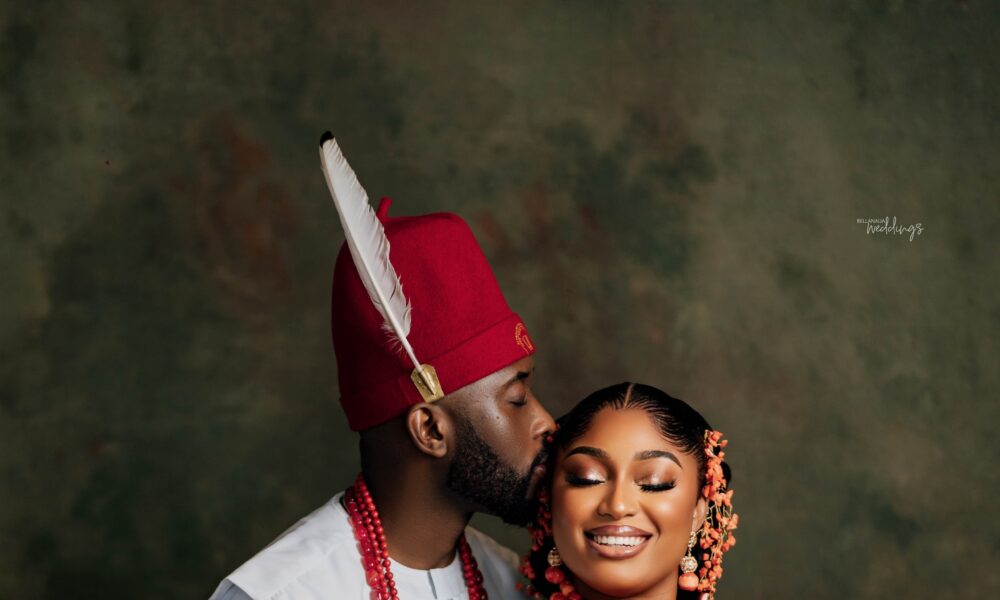
Anwuli and Kennedy's love story, sparked by an Instagram connection, led to a beautiful Igbo traditional wedding. After ...
Teyana Taylor & Lucien Laviscount Light Up the 'Spirit Tunnel' with Epic Dance Moves!
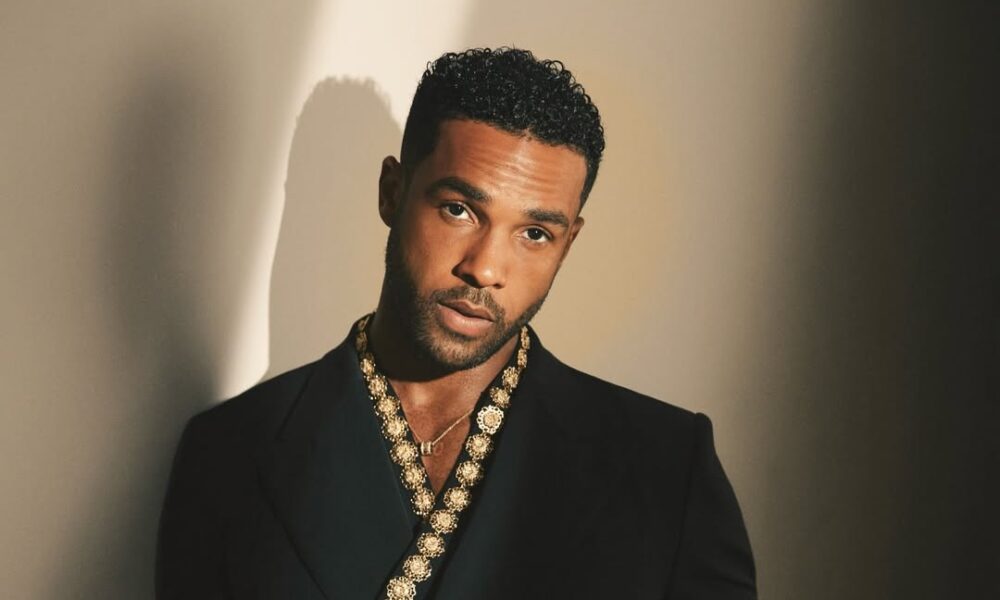
The Jennifer Hudson Show features high-energy 'Spirit Tunnel' entrances, with Lucien Laviscount making a stylish walk an...
Kenya's Billion-Shilling Travel Bill: Austerity Pledge Broken?

The Kenyan government spent nearly Sh5 billion on travel in the first three months of FY 2025/26, raising concerns about...
Shehu Sani Urges Nigerians: Shun US Travel Ban, Build Nation

The United States has enacted new travel restrictions impacting Nigerian nationals, covering both immigrant and several ...
.png&w=1920&q=75)
